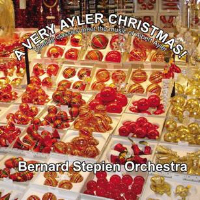|
Music Is The Healing Force Of The Universe The Inconsistency of |
|
|
||||||||||||||||
|
News from 2015 - September to December September 1 2015
Ayler on the radio On the 28th November, 1971, the France Culture channel broadcast the first of a two-part radio programme about Albert Ayler to commemorate the first anniversary of his death. The second part was broadcast on 5th December. The programme was produced by Daniel Caux, who had organised Ayler’s final concerts in France at the Fondation Maeght. Each part was nearly three hours long and as well as music, included Daniel Caux’s own interview with Ayler, and interviews with several musicians (Alan Silva, Sunny Murray, John Tchicai, Don Cherry, Milford Graves, Beaver Harris, Allen Blairman, Leroy Jenkins) who had played with Ayler and others (Archie Shepp, Bernard Stollman, Moki Cherry) who had known him. The programme is now available on the France Culture site: My Name Is Albert Ayler. Part 1: Spiritual Unity
My Name Is Albert Ayler. Part 2: Love Cry
Both parts can also be downloaded as podcasts here (search for ‘Ayler’).
I have to thank Pierre Crépon, who initially informed me about the programme, stressing its importance, since, coming so soon after Albert’s sudden passing, it documents some of the early responses to that event. And I also have to thank Johann Haidenbauer, who let me know that the programme was available online. A word of warning, the sound quality is not great, and although most of the interviews are in English (Bernard Stollman speaks French) there is a simultaneous French translation which, at times, obscures the original. I’ve done a rough breakdown of the two parts of the programme to give an idea of what’s included and where. The interviews with Albert Ayler and Don Cherry are included in the Holy Ghost box, but the others are, I believe, unavailable elsewhere. Most of the music is taken from Ayler’s records, but there is some unreleased material from the second concert at the Fondation Maeght (27th July, 1970), towards the end of the second part of the programme. For a while, I was working on another copy of the programme, attempting to transcribe the interviews, but as the process was (to slip into the vernacular) ‘doin’ me yed in’, I abandoned the task. However, I have added my rather feeble efforts after the breakdown in case they are of any use. Daniel Caux 1971 Radio Programme Breakdown * Conversations II by William Parker |
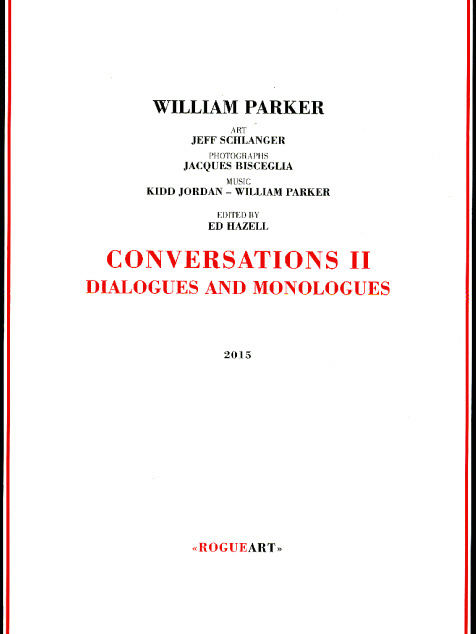 |
|
The sequel to William Parker’s Conversations (published in 2011) is now available (full details on the RogueArt site) featuring interviews with Muhammad Ali, Marshall Allen, Tim Berne, Nathan Breedlove, Rob Brown, Daniel Carter, Bill Cole, Jerome Cooper, Andrew Cyrille, On Davis, Ernest Dawkins, Mark Dresser, Douglas Ewart, Giuseppi Logan, Henry Grimes, Mark helias, William Hooker, Kidd Jordan, Maurice McIntyre Kalaparusha, Jackson Krall, Yusef Lateef, Helene Labarrière, Sabir Mateen, Thollem McDonas, Jemeel Moondoc, Butch Morris, Fred Moten, Roswell Rudd, Jeff Schlanger, Wadada Leo Smith, Steve Swell and David S. Ware. The following extract from the conversation with On Davis might be of interest - On (formerly John) Davis played guitar with Don Ayler’s band at the concert in Florence in 1981: “How did you meet Donald Ayler? How did he come into your life? Donald. I met Donald Ayler at the airport, going to the gate. Bassist RaDu ben Judah, who was my first music friend and associate when I first got to New York—we met doing a Broadway play and after the rehearsals and the play went up, of course, the brochure had a little exposé on the artists involved and I saw that he was playing with the Sun Ra band and things like that and I said, wow, I said, you played in the Sun Ra! We became friends and I’ve known him the longest of all the people I’ve known in New York all these years. RaDu had the gig with Donnie because of [Abdul Rahim] Mustafa, who actually had the relationship with Don and asked RaDu to be on the gig, and then also Tony Smith. The guitar player that was going to make the gig couldn’t do it and RaDu called me, like, two days before they were leaving and asked, could I make the gig, was my passport in order, things like this. I Told him, yes, I could go. So he called me the day before and said, okay, you’re on the gig, be at the airport at this time, and that’s when I met Don. The interesting thing was, Don brought Frank Doblekar from Cleveland with him, who played tenor saxophone and was acquainted with the tunes. When we got overseas, we went to Italy and nobody else in the band knew the tunes, so in a way I was turning the same page as everybody else in the band. We rehearsed a couple of days before we did our first performance. As I recall, he wrote very hip tunes—very simple but very catchy. Am I crazy or what? No. They weren’t abstracted ideas. They’re very melodic tunes. He did one tune called “The African Song,” for example, and it was kind of like a rhythmic groove kind of thing—it was more like something like an “Afro Blue” kind of thing or something like that. It had that kind of feel about it, a definitive melodic line and chordal understanding—it made sense in the chords. The cleaner and clearer the chords, the brighter the music shines. Yet the improvisational side had this freedom to go anywhere. It had all the elements for a good creation or realization of his tunes. He had a tune called “The Bebop Tune,” which is kind of a floaty melody kind of idea, very nice, almost like a happy-sounding kind of tune. So yes, very infectious, simple melodies is what he was working on, and I think it came across that way, yeah. Now, he was actually from Cleveland also. Right, Donnie is from Cleveland. Of course, I didn’t know him when he was there, but he ended up going back to Cleveland and got married in Cleveland and he lived out his days there. Yes, there’s a Cleveland feel from that, yeah.” Don Ayler in Florence 1981 is available on the Donald Ayler Discography page. * The New Wave in Jazz Last month I mentioned the Village Gate and the concert Leroi Jones (Amiri Baraka) organised there on 28th March, 1965, selections from which were later released by Impulse as The New Wave in Jazz. I never came across the LP back in the day and as the years passed I came to regard it as a compilation, not realising its significance, so when I came to do the Ayler discography I just added it to the Compilations page. It deserves more. So, now that Ayler’s ‘Holy Ghost’ has been transferred to the rest of his Greenwich Village recordings (and as a consequence, removed from the CD version) I’ve added The New Wave in Jazz to the In Greenwich Village page of the discography. Leroi Jones (Amiri Baraka) included his sleevenotes to the LP in his 1968 collection of essays, Black Music, so I’ve also added these to the In Greenwich Village Covers page. * Return the Tides: Ascension Suite and Holy Ghost by Rob Mazurek and Black Cube SP |
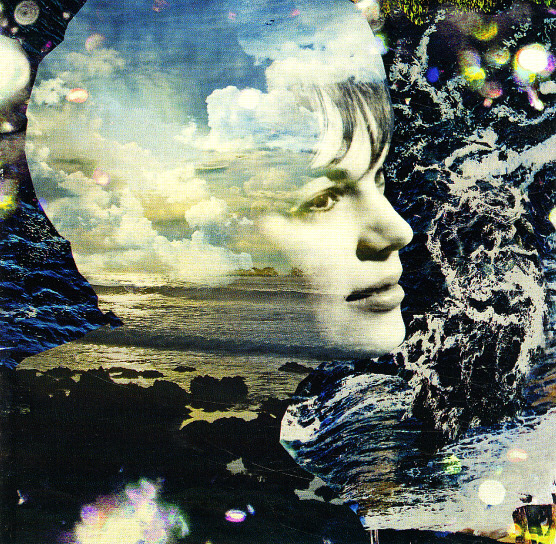 |
|
I’m not sure whether this can be classed as an Ayler tribute, but Ayler is definitely referenced in the title, so I’ve added it to the Tributes page. Released by Cuneiform Records last year, full details of the album, including a sample, are available here. More background information on the Charlotte Viewpoint site. Rob Mazurek and Black Cube SP recently (i.e. last Friday) performed the suite at this year’s Saalfelden Jazz Festival in Austria. * And finally . . . |
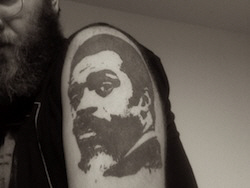 |
|
Alfie Cooke found this on the Aquarium Drunkard site. The arm belongs to Megafaun’s Bradley Cook. The tattoo is the work of Annie Walker at Blue Flame Tattoo in Raleigh, North Carolina (just in case you’re thinking of getting one). Perhaps even more surprising is the fact that he also has a tattoo of David Tudor, presumably on his other arm. * The news from June to August, 2015 has now been buried in the Archives. *** October 1 2015
Henry Grimes Biography Music to Silence to Music by Barbara Frenz has just been published by Northway Books. |
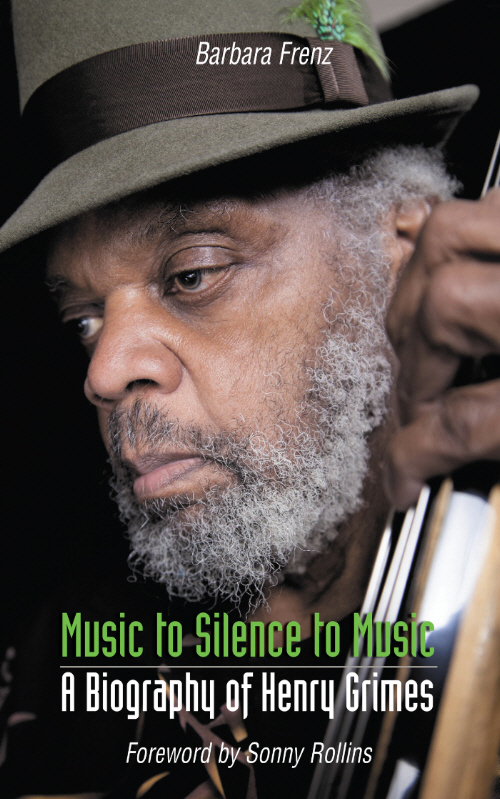 |
|
There’s a review by Chris Searle in the Morning Star. I’d also recommend checking out the Northway Books catalogue. * Albert Ayler’s Ghosts Live at the Yellow Ghetto I mentioned this upcoming release by X—X (due next month on Smog Veil Records) back in June, but here it is again. |
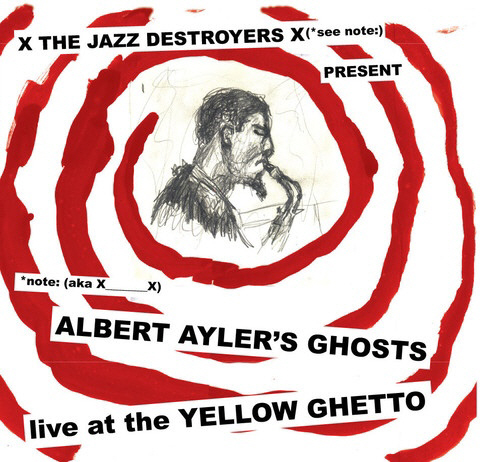 |
|||||
|
The version of ‘Ghosts’ is available on the Dangerous Minds site, as well as a video of X—X recording it. There’s also John D. Morton’s explanation of how it came to be included in the band’s repertoire: ‘I was 14 when I got the the ESP Sampler for 99¢. I knew the Fugs, I knew Sun Ra a little, and I knew William Burroughs. The sampler had just a little clip of every song, and one of them was from Albert Ayler’s “Ghosts,” and I’d never heard anything like it. I mean I was 14, just getting out of the Beatles and looking for more interesting things. “Ghosts?” I was totally flummoxed by it, but I smiled when I heard it. And I went on to discover more about music, and I actually bought an Ayler album. I didn’t even know he was from Cleveland, then I found that out, and eventually I realized that when I play, the way I think about music, that little clip of Ayler was always in my mind’s background, especially in my thoughts about anti-music. There are a lot of similarities, when you think about it, between free jazz and punk. They’re both angry, or at least I think so, they can both be funny, and they’re both like “fuck you, I don’t care if you like it or not.” So while we were on tour, Craig said that we’d become a “real band,” and on the way back from Detroit, Andrew told us he made arrangements for us to record. So knowing we were going to stay together and record, I thought about “Ghosts,” and I tried to work it out to see if I could do it. I don’t know the scales on purpose, and sax has different scales anyway, but I was able to learn it. And I knew that doing it was audacious, and it had to be really good if we did it, otherwise it would be laughable, embarrassing. It had to be right. Some songs are great, but some bands shouldn’t do ‘em. I got through the first three melody parts that make up the piece and got to the free jazz part, and 20 seconds in to that, I knew I could do it. Teaching the guys to play it, they were looking at me kind of askance, like “we’re REALLY going to do this?” and Craig said “oh, this could kill us.” But part of the basis of Smog Veil’s interest in releasing the album was the cover of “Ghosts,” so it had to be there. We met up in Cleveland like five days before the recording to practice, we hadn’t been together since the tour. We got through “Ghosts” and I said “we got it, we can do it,” and they all looked at me like “I don’t know if we played it right.” I said “You can’t play it wrong.” But after we recorded it, we all agreed it was the right thing to do. The fact that Ayler’s from Cleveland, I feel a debt and affinity there. I’d heard free jazz by Coleman, and others, but Ayler was the ghost that spoke into my ear.’ * Merzbo-derek Some new stills from the Fondation Maeght film have been posted on the merzbo-derek site. This group have French subtitles from the Daniel Caux interview (included in the radio programme mentioned last month). |
|||||
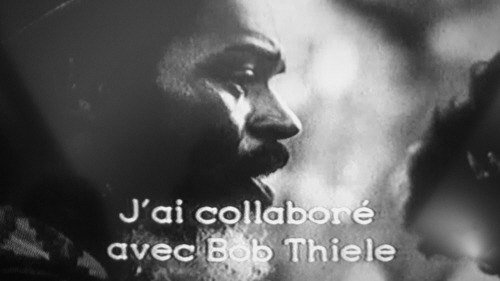 |
|||||
|
Ruins and Rumors Howard Rambsy II’s Cultural Front site has a really nice piece about a conversation he had with Amiri Baraka about Albert Ayler. * Chords I love music but I have absolutely no idea how it all works, I just listen to it (rather reminiscent of Donald Sutherland’s attitude towards tanks in Kelly’s Heroes). I came across this on the Chordify site, which may be of interest to those who don’t share my abysmal ignorance. * A couple of tributes ‘The Crucifixion Of Albert Ayler’ is a track by Anthony Osborne from the Classwar Karaoke - 0031 compilation, available at freemusicarchive.org. And here’s ‘Albert Ayler Blues’ by a Greek band called Bootleggers. Very odd video, nice trombone solo, and a great closing line: “This night I m gonna right the letters on my grave”.
|
|
October 16 2015
Who is Your Greatest Jazz Artist of all time? Not Albert Ayler, that’s for sure. The BBC are currently running an online poll to find the ‘Greatest Jazz Artist of all time’: “50 Great Jazz Artists have been nominated by the jazz community and BBC Music Jazz together with Jazz FM want you to vote for who you think is Your Greatest Jazz Artist of all time. The shortlist presented below was provided by a panel consisting of BBC jazz presenters, Jazz FM presenters, jazz musicians, critics, and journalists. Voting starts at 8am on the 6th October, and closes at 8pm on Thursday 22nd October so make sure you get your vote in to help decide who is voted Your Greatest Jazz Artist of all time! The results and winner will be announced in a short series of programmes that will feature on the BBC Music Jazz digital radio station which will run from 12th to 15th November 2015.” Here’s the shortlist (arranged alphabetically in the ‘modern’ style on first names): |
|
|
|
|
So, according to the BBC, (I shouldn’t really single him out, but I will) Jamie Cullum is a greater ‘jazz artist’ than Sidney Bechet, Coleman Hawkins, Artie Shaw, Benny Goodman, Stan Getz, Gil Evans, Lee Konitz, Sonny Rollins, Jimmy Giuffre, Roland Kirk, Eric Dolphy, Cecil Taylor, Don Cherry and Albert bloody Ayler!!!!! And if you’re allowing groups in there like Loose Tubes, then why not the Modern Jazz Quartet or the Art Ensemble of Chicago. And it does seem a bit odd that Abbey Lincoln makes the list but Max Roach doesn’t. I could go on, but let’s leave it there. *** November 1 2015
More Sheet Music Many thanks to Dirk Goedeking, who sent me the scans of several transcriptions of Ayler’s music from Peter Niklas Wilson’s Spirits Rejoice: Albert Ayler und seine Botschaft (Hofheim, Germany: Wolke Verlag, 1996). Dirk also took the time and trouble to contact the book’s publisher to get permission to add them to this site. For those who can read the dots, click the links below. Down By The Riverside (take 6) * N.Y.P.D. You know that scene in U.S. crime shows and films, when the cops go down into a basement full of cardboard boxes to find the evidence from an old case to crack the one they’re working on, or that one when they retrieve some vital piece of information from their extensive computer archives, well ... Richard Koloda, who’s been writing his book about the Ayler brothers since before this site began, has reached the ‘trying to find a publisher’ stage (fingers crossed), but is still trying to track down some elusive details. Richard reckoned that the New York Police Department should have a report concerning the discovery of Ayler’s body in the East River (including information about how it was identified so quickly), as well as a possible report of the police visiting Ayler’s apartment to investigate a domestic dispute, and he was also interested in finding out whether Mary Maria ever filed a missing person’s report after Albert walked out. Richard is a lawyer, so he knows how to do these things (he’s not like me, I get a lead, send an email, get no reply and think, ‘sod that then’). It took him nearly a year and eight letters, including complaints to the Governor, the Attorney General and the Law Director of New York, and the Civilian Review Board and the Internal Affairs Department of the N.Y.P.D. before he got a reply. You can read it below (by the way, I’ve blanked out Richard’s address, to protect the innocent): * An old saxophone And since the name of Mary Maria has just been invoked ... I often wonder what happened to Albert Ayler’s saxophones. The one pictured below isn’t one of them. But according to a piece on the Andra Jazz record shop in Stockholm, on Mats Gustafsson’s Discaholic Corner site, Albert did at least touch this one. |
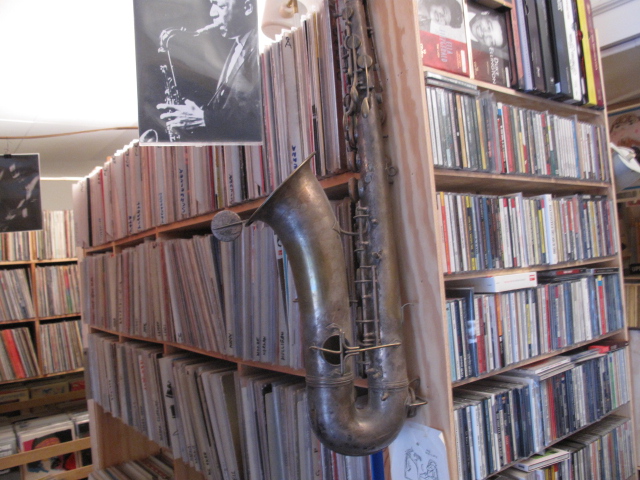 |
|
Discographical niggles And from a big record shop we pass on to a couple of curiosities in the wonderful world of the Albert Ayler Discography. This was prompted by Dirk Goedeking sending me (along with the sheet music scans) this item he came across on the German ebay site. |
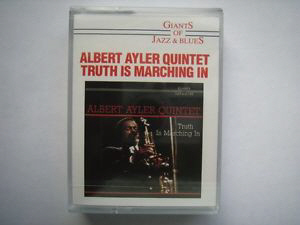 |
|||||||||||||||||||||
|
This is a DAT cassette version of the Magic Music CD, Truth Is Marching In, which is a German release of Live at Slug’s Saloon (Volume One). It seems to be part of a series called, ‘Giants of Jazz & Blues’, and I wondered at first if this was another of those magazine freebies. However the only other one I could find was a version of Ornette Coleman’s Town Hall, 1962 (ESP 1006), retitled Dedication To Poets And Writers, and released by Magic Music as DAT 40010. So, it seems that Volume One (at least) of Live at Slug’s Saloon was issued on DAT cassette. I’ve mentioned before that it was these confusing German CD versions of ‘Slug’s’ which actually prompted me to start this site. |
|||||||||||||||||||||
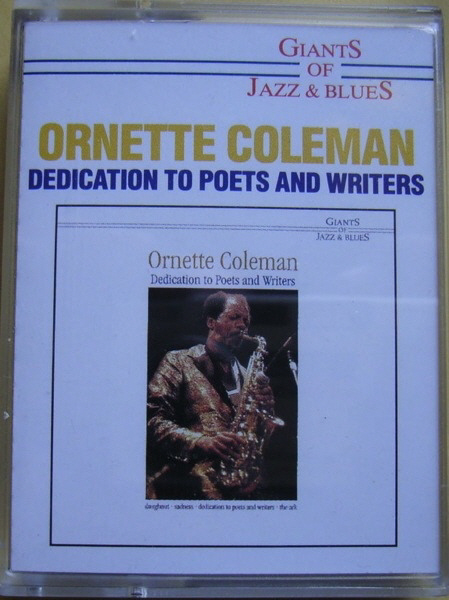 |
|||||||||||||||||||||
|
The first place I looked for information about the Ayler cassette was, obviously, the German ebay site, but the auction had ended and, although old auction pages sometimes hang around, I couldn’t find anything. However, I did find a couple of versions of Ghosts and put the pictures on the Ghosts Covers page. The first was the Italian ‘I Grandi del Jazz 12’ issue from Fabbri Editori, the second, the Tobacco Road Vibrations, Volume 25 of the series, ‘American Jazz & Blues History’. Now, for some reason (presumably because Ghosts was originally issued on Debut) I’d got the Tobacco Road release as Danish, it is in fact, German. However, this copy was Italian, another product of Fabbri Editori. And, checking the Tobacco Road series on the Discogs site, I found that Volume 25 (albeit on a different label) was actually, a John Lee Hooker LP. Sometimes, you just think, ah forget it, walk away. Before I did, I ended up on the Italian ebay site, which had a copy of the French Explosive (538107) release of Spiritual Unity, which, despite having ESP on the record label, is the first I’ve ever come across which does not use the original, classic cover. |
|||||||||||||||||||||
 |
|||||||||||||||||||||
|
And a final discographical note. You know all those download versions of My Name Is Albert Ayler with the weird titles (‘Tea Time Music’, ‘Easily Stop Time’ etc.) available on amazon, there’s a new one, which I should mention since it may cause more confusion than the others. |
|||||||||||||||||||||
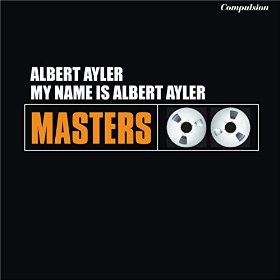 |
|||||||||||||||||||||
|
Six Cents in the Pocket Is not the reason I can’t buy any of the above or visit fancy record shops in Stockholm, but the title of a new short film directed by Ricky D’Ambrose, which uses Ayler’s ‘Holy Ghost’ (from the 1965 Village Gate concert, available on Live In Greenwich Village: The Complete Impulse Recordings) on the soundtrack. It’s available online and there’s a review on the Film Pulse site. * And finally ... II don’t think I’ve mentioned this before, but it is from April, 2014. It’s not often you come across a blogpost which links Jane Austen to Randy Newman and Albert Ayler. It’s on Mike Butler’s Dyverse Music site. *** December 1 2015
New Re-releases Last month Impulse released New Grass and Music Is The Healing Force Of The Universe on a single CD. |
|||||||||||||||||||||
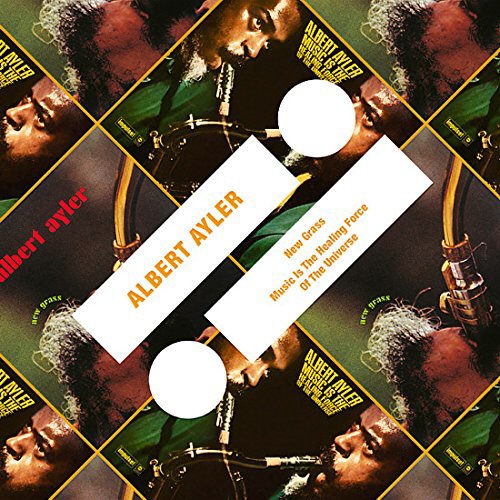 |
|||||||||||||||||||||
|
A companion set to the Love Cry/The Last Album coupling, it’s a straightforward transfer with no extra material, but it is cheap and I’m seriously considering breaking my vow never to have a copy of New Grass in my house. The other new re-release is due out this month and is a double CD set from ESP. |
|||||||||||||||||||||
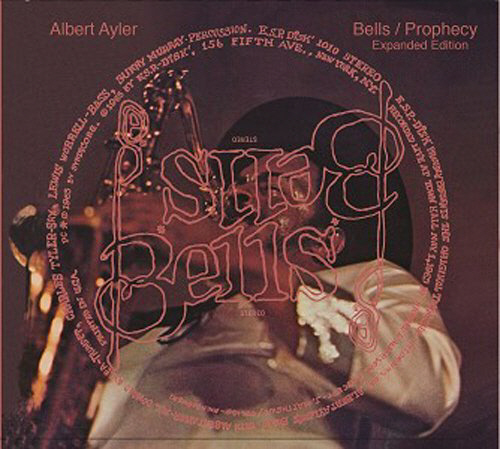 |
|||||||||||||||||||||
|
The ‘Expanded Edition’ of Bells/Prophecy includes the second set of the Albert Ayler Trio from the Cellar Cafe, which was originally issued on the German release Albert Smiles With Sunny and subsequently in the Holy Ghost box set. There's no mention of this release on the ESP site as yet, but it is available for pre-order on amazon (to be released on 11th December) with the following 'product description': “Albert Ayler’s trio with Gary Peacock and Sonny Murray is best known for the July 10, 1964 recording of Spiritual Unity, the album that made both Albert and ESP-Disk' famous when it was released. A decade after that, ESP-Disk' also released, as Prophecy (ESP3030), the first documentation of the group, as recorded a month earlier by Canadian poet Paul Haines at a concert at a 91st Street club. These Cellar Café recordings are augmented here beyond the five cuts on the original Prophecy by including another six tracks from the same gig. (We use the more accurate titles found in their release in the Holy Ghost box set on Revenant rather than the fanciful titles on their first issue, as Albert Smiles with Sunny on the German label In Respect. Note also that ‘Wizard’ on CD 1 and ‘The Wizard’ on CD 2 are different compositions.)” Now this is an interesting re-release. ESP should be congratulated for bringing the whole Cellar Cafe set together again. It also shows that, following the death of Bernard Stollman, they are still interested in reworking their back catalogue. And, considering the problems surrounding the Holy Ghost box, it is, perhaps, a sign that more of that material might be dragged back from the legal limbo to which it has been consigned. So, I don't wish to cavil, but I do wonder what Bells is doing in there. I know when ESP first issued Bells with Prophecy on a single CD it seemed like a good idea (and I remember saying as much on this site). Now, I wonder whether it might have been better to issue a complete version of the Cellar Cafe recordings, perhaps (although this might be viewed as heresy) with the only studio recording of the Trio - Spiritual Unity. Then add Bells to a re-release of Spirits Rejoice where it would sit more comfortably (quick burst of If I ruled the world, every day would be the first day of spring ...). No, this is an important re-release and a bargain purchase for anyone new to Ayler. * Staying with discographical matters Dirk Goedeking alerted me to the New Grass reissue and also solved last month’s conundrum: ‘There are two “American Jazz & Blues History” series. The German Tobacco Road edition contains the GdJ12 release of “Ghosts”. It is no.25. The Spanish edition on Phonic is somehow similar looking but completely different. Unfortunately both got mixed up on the Discogs site.” Dirk also sent a link to another transcription of ‘Ghosts’ by Lars Larsson, photos of the 10 LP box set, Kings of Jazz Vol 1, (released in Germany as Happy Bird F10 / 90162) and another Ayler cassette rarity: |
|||||||||||||||||||||
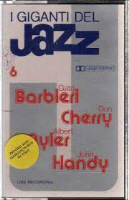 |
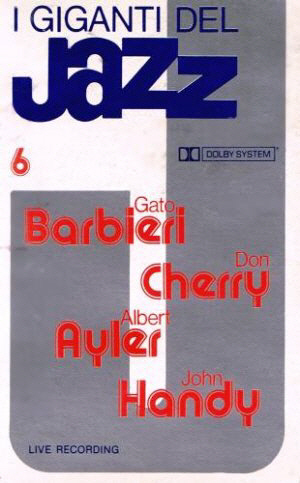 |
||||||||||||||||||||
|
What I can’t thank Dirk for, is suggesting I add Ayler’s (or more accurately, Mary Maria’s) lyrics to the site. But, in a spirit of masochistic completism (or maybe we’re just coming up to Christmas), I have put ‘New Generation’ (which Dirk found here) and ‘Music Is The Healing Force Of The Universe’ (which I came across here) on the Sheet Music page. Any others I find (or if anyone wants to send me some) I will add to the site, but my masochism does know bounds and I really can’t face transcribing them myself. * X__X again As I said, the ESP site doesn’t mention the ‘Expanded Prophecy’ but it does have a piece about John D. Morton of ‘legendary Cleveland art-punk band X__X’ concerning the album Albert Ayler’s Ghosts live at the Yellow Grotto, which I’ve mentioned a couple of times before. Mr. Morton explains his interest in fellow-Clevelander Ayler in a very entertaining ‘kinda reminiscence’ which ends with another trip to find Albert’s grave. I have this mental picture of the Highland Park Cemetery with all these Ayler-acolytes wandering around the military section, staring at the ground and bumping into each other. * Shabaka Hutchings As part of the London Jazz Festival, Shabaka Hutchings presented a concert entitled, ‘'The Father, the Son, and the Holy Ghost'' at Brilliant Corners, on 16th November. It was reviewed in the Financial Times: ‘In contrast, Shabaka Hutchings’ gig at the east London venue Brilliant Corners last Monday was an uplifting treat. Using the title “The Father, The Son and The Holy Ghost”, the London-based saxophonist addressed the spirituality and latent optimism of late-1960s jazz by reinvestigating compositions by John Coltrane and fellow saxophonists Pharoah Sanders and Albert Ayler. The continuous performance opened with Coltrane’s “Living Space”, segued into Ayler’s “Ghosts” and included Sanders’ “Upper and Lower Egypt”. Hutchings captured in turn Coltrane’s tonal warmth, Ayler’s phonics and Sanders’ growl, and bought out the lyricism in each theme. But his solos were every bit as searching as those of the originals, while pianist Alexander Hawkins, bassist John Edwards and South African drummer Louis Moholo-Moholo captured the music’s essence without resorting to imitation. The band were on fire, tempering ferocious expressionism with a strong sense of spiritual warmth. And each detail was captured by Brilliant Corners’ remarkable acoustics.’ * Robert Priseman - Fame I was going to end with this, but, being so close to Christmas I was worried you'd think I'd caught religion, so I thought I'd better put it here. |
|||||||||||||||||||||
|
“Curated by Tony Guerrero, this project comprises 100 damaged religious icons from the eighteenth and nineteenth centuries, bought from e-bay and over-painted between 2011 and 2013 with the portrait of a twentieth century celebrity whose life has ended in early death through self-destructive life style or suicide. The process of over-painting seeks to mimic the replacement in contemporary culture of faith with fame and saints with ‘stars’.” See the other 99 on Robert Priseman’s site. * World Saxophone Day Apparently November 6th was World Saxophone Day. According to this article by Shilpa Bansal in the Indian edition of the International Business Times: “Saxophone Day will be observed on Friday, 6 November, 2015. All you sax-crazy fans can celebrate the day with a good dose of smooth jazz, soulful blues and good old rock'n'roll. All music lovers, especially blues, have always dreamt that they could play this instrument that creates such soulful melodies. So what if you can't play the instrument, we suggest you just sit back and enjoy those tunes.” This is followed by a list of the five top saxophonists - Charlie Parker, Sonny Rollins, John Coltrane, Coleman Hawkins and Sidney Bechet - which is fair enough. And the article closes with some other recommendations: Joe Henderson, Dexter Gordon, Grover Washington Jr., Stan Getz, Eric Dolphy, Albert Ayler and Sam Rivers. * The BBC Greatest Jazz Artist Poll - the results No such recognition for Albert in the BBC’s 'Greatest Jazz Artists (of All Time)' poll - he didn’t even make the shortlist. The results have been announced and you can find the rankings and a representative track from each of the 50 we were allowed to vote for here. Miles Davis came out top of the list - which is, perhaps, not surprising. Not too sure that 'What A Wonderful World' by No. 2, Louis Armstrong, is the best choice of track - would have preferred 'West End Blues'. Jamie Cullum comes in at No. 28, thus proving he's a greater jazz artist than Dizzy Gillespie (34). As my owd grandma used to say, "it's a pack of daft". * And finally . . . As is this. |
|||
 |
|||
 |
|||
|
Merry Christmas! *** December 9 2015
A Very Ayler Christmas Improvising Musicians of Ottawa/Outaouais presents A Very Ayler Christmas Saxophone Caroling (Followed by a group from Montreal with guitarist Alex Pelchat) Sunday, December 13th At the Raw Sugar Café 692 Somerset st., Ottawa From 7 to 9 pm sharp |
|
|
|
The Very Ayler Christmas project initiated in 2006 by saxophonist Bernard Stepien is maturing well. Arrangements are stable and a sizeable mashup of Christmas Carols and Albert Ayler compositions is well established with consolidation of ideas on what to do with it. After so many years (9 years to be precise) there can only be a natural turnover of musicians. But like Christmas itself that has been going on over a thousand years on the Christian side and tens of thousands of years on the Pagan side (Neanderthal man used to celebrate the Winter Solstice in his cave), there is no dwindling of interest in this project. Thus, in addition to the core horn players (Stepien/Wellman/Broscoe) trying to extract the spirit of saxophonist Albert Ayler and for which this project has grown into a ritual, we welcome a percussionist and two guitarists this year: Rory McGill’s xylophone that he uses extensively in his Rakestar project to render Sun Ra’s outer space electronics. He will be a great contribution in pieces such as Ayler’s Omega is the Alpha, a natural for xylophones. David Jackson outer space guitar will highlight rhythmic pieces like Ayler’s Bells against Joy to the World. John Higney’s meticulous style will add an overdose of mystery to the classic Silent Night side by side with equally mysterious Ayler’s Our Prayer. Finally, on the arrangement side, Bernard Stepien touched up some pieces after discovering what can be overlaid and what cannot but especially, following the world events context where once more some people tried to destroy music, he integrated the Marseillaise to Ayler’s Spirit Rejoice mashed up to We Wish You A Merry Christmas. That one was easy, since Ayler himself, who spent his early years playing in an American military band in Orleans, France, was frequently using the Marseillaise that he called affectionately the Mayonnaise... Albert Ayler, a very spiritual man, developed his art around a remarkable combination of Gospel and military music and left a radical imprint on the Jazz world. Forty five years after his mysterious death, Ayler, heavily admired by peer saxophonist John Coltrane still fascinates old fans and new generations alike with endless re-releases of his recordings and one book after another. It was during typical Christmas time jam-sessions that we discovered that lots of Albert Ayler compositions had deep similarities with Christmas carols even more so than general gospel music that is officially referred to for the roots. Over the years we started interweaving the two repertoires and we finally came up with 14 compositions fully mashed-up with carols. According to critics world wide, at the end, one never knows which is which. Are Christmas carols an extension of Albert Ayler’s music or the natural reverse? Finally, after 8 years of brain-washing, I even end up composing a Christmas carol of my own (Winter Solstice Bells, the title has even an Ayler title component) fully influenced by the joyful works of Albert Ayler that draws a lot on loops which should appeal to the younger audiences more used to tekno music of all sorts. * Valokiilassa amerikkalaissaksofonisti Albert Ayler Or, ‘Spotlight on American saxophonist Albert Ayler’ - a programme broadcast on the Finnish station, Areena Radio on 29th November. Thanks go to Johann Haidenbauer for spotting this. *** December 14 2015
More from Bernard Stepien In my opinion the most fascinating ‘reworkings’ of Ayler’s music are Bernard Stepien’s mix of Ayler tunes with Christmas carols, and Kalle Autio’s chamber music settings of Ayler. These two came together on December 9th when the Canadian radio station CKCU broadcast a programme in which Bernard Stepien discussed Kalle Autio’s work. It’s available on the Rabble Without A Cause Playlist. |
|
*** News from 2004 (January - June) 2004 (July - December) 2005 (January - May) 2005 (June - December) 2010 (January - June) 2010 (July - December) 2011 (January - May) 2011 (June - September) 2011 (October - December) 2012 (January - May) 2012 (June - December) 2013 (January - June) 2013 (July - September) 2013 (October - December) 2014 (January - June) 2014 (July - December) 2015 (January - May) 2015 (June - August) 2016 (January - March) 2016 (April - June) 2016 (July - August) 2016 (September - December) 2017 (January - May) 2017 (June - September) 2017 (October - December) 2018 (January - May) 2018 (June - September) 2018 (October - December) 2019 (January - May) 2019 (June - September) 2019 (October - December) 2020 (January - April) 2020 (May - August) 2020 (September - December) 2021 (January - March) 2021 (April - July) 2021 (August - December) 2022 (January - April) 2022 (May - August) 2022 (September - December) 2023 (January - March) 2023 (April - June) 2023 (July - September) 2023 (October - December) 2024 (January - March) 2024 (April - June) 2024 (July - September) 2024 (October - December)
|
||
|
Home Biography Discography The Music Archives Links What’s New Site Search
|
||

